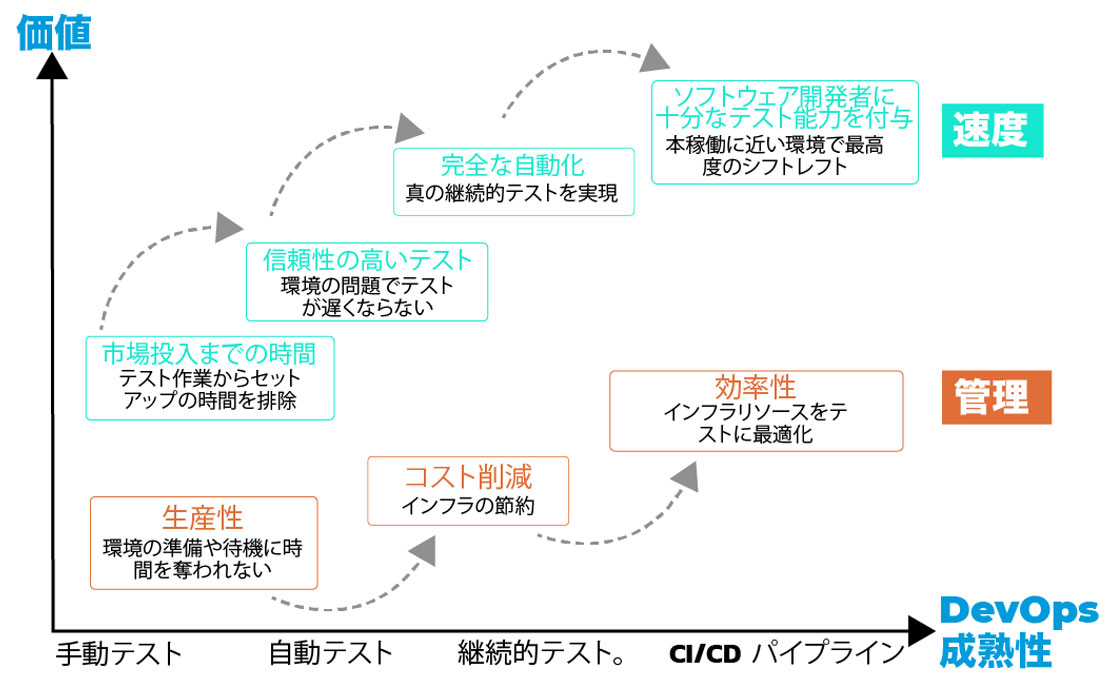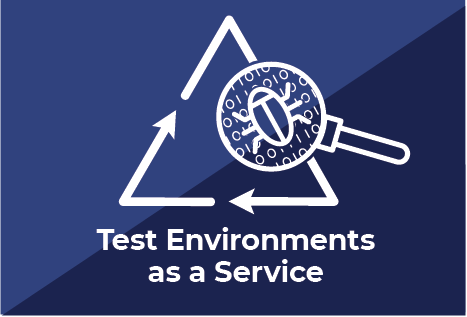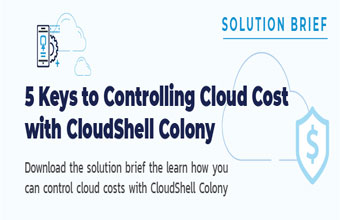SOFTWARE TEST ENVIRONMENTS AS A SERVICE
サンドボックステスト環境を利用して、ソフトウェアをより早く本稼働環境にリリース
- サンドボックステスト環境を利用して、ソフトウェアをより早く本稼働環境にリリース.
- ハイブリッド インフラストラクチャ上の複雑なソフトウェアテスト環境のプロビジョニングを自動化します.
- サンドボックステストを簡略化します. 専門家でなくても、テスト環境をオンデマンドで簡単にセットアップできます.
- 複雑な本稼働環境をベースにしているため、信頼性の高いソフトウェアテストを実行できます.
- 本稼働時のパフォーマンスと可用性を向上させるために、TestOps、シフトレフトテスト、シフトライトテスト戦略をサポートします.
- 仮想ワークプレイスでテスト環境にリモートでアクセスします.
Arta :
Hello everyone. Welcome back to QualiFYI. I’m your host, Arta Shita and I’m joined here today by Christine Bentsen, head of product marketing of continuous testing at Broadcom.
Christine:
Hi Arta.
Arta :
Hi. So excited to have you on our show.
Christine:
Thank you.
Arta :
Let’s get right into it. You are a thought leader extraordinaire of continuous testing. You all should check out continuoustesting.com. It’s fire. Tell us what is continuous testing?
Christine:
Continuous testing is the newest way to do testing. Traditionally testing was done as a time-boxed event at the end of the software delivery lifecycle. It was done by a team of dedicated testers, and it happened at the very end. Right?
Arta :Right.
Christine:
A time-boxed event.
Arta :
Right.
Christine:
Now, with the advent of new practices like DevOps and continuous delivery in Agile, that causes a bottleneck because it happens at the end.
Arta :
Right.
Christine:
What continuous testing does is it shifts testing and the idea of quality left into planning and Dev and right into production and using data from the application life cycle from the pipeline to continuously improve quality and to make everyone responsible for quality. This also allows you to find and fix problems as soon as they happen in the application delivery life cycle when they’re easier to identify and faster and cheaper to fix.
Arta :
Fascinating. You mentioned bottlenecks. You mentioned finding the problems right at the right time, but surely there are some common challenges that people face in continuous testing. Can you walk us through some?
Christine:
Yes, absolutely. So of course companies that are trying to do DevOps and continuous delivery, and that are having these bottlenecks, and they see that the bottleneck face testing, of course they’re like, well let’s do continuous testing. That makes a lot of sense.
Arta :
Right, no brainer.
Christine:
But they have trouble adopting continuous testing, and one of the common problems is that the tools that those traditional testing teams have been using, they’re typically built with a UI, they’re a little bit clunky.
Arta :
Right.
Christine:
They were built for different teams, right? Sometimes the licensing is restrictive, what they support is restrictive, and they just don’t work for the way that these Agile teams and Dev testers want to work.
Arta :
Mm-hmm (affirmative).
Christine:
What these folks want to do is they want to do things as code. They want to do it in their IDEs without having to switch to another application. They want it embedded in the CICD tool chain, right. And they want to work with open source.
Arta :
Yeah.
Christine:
All of these things do not work with those legacy testing tools. Then we also have some problems with continuous testing bottlenecks itself.
Arta :
Mm-hmm (affirmative).
Christine:
Right. Every year, Broadcom does a report with Sogeti, the continuous testing report, and we’re about to release the new one, and I’ll give you a couple of previews about what’s going to be in this one.
Arta :
Would love that.
Christine:
So year over year we found that companies are still struggling with continuous testing. They’re still struggling in a lot of the same areas. My summary of the report was everything is hard and we can’t figure it out. Right? But there are a lot of problems and we asked them, what are the chief problems that you have?
Arta :
Right.
Christine:
Things that they told us is they have trouble getting visibility into the pipeline.
Arta :
Okay.
Christine:
They have trouble assessing performance from the end user standpoint, like when you release the application under peak load or from global perspectives, what’s that going to look like to your end user? What’s the impact on your end user? They have trouble with test environments, right? They spend a lot of time trying to get those test environments right. There’s a lot of things that happen actually within… Oh I forgot one, one of the things that they all told us, many people tell us in the report that they’re doing continuous testing, but then when you drill down into it, they say they’re having trouble achieving testing in Sprint, which is continuous testing.
Arta :
Right.
Christine:
There’s a lot of disconnects, and like I said, a lot of companies are really struggling with making continuous testing work. But back to the test environment piece, right?
Arta :
Yeah.
Christine:
So this is a stat that we see, not only in this report, but I see it in lots of different reports, how much time and effort companies are spending trying to get test environments on demand, spin them up and spin them down when they need them.
Arta :
I’m so happy you bring that up because that’s exactly what we’re into. How important then is automated environment provisioning?
Christine:
Drilling down into that report a little bit more, and again this is a sneak preview into what is coming soon.
Arta :
Yeah. I feel special.
Christine:
Yes. The respondents told us that they’re spending 42% of their time, their team’s time building, and maintaining, and decommissioning these test environments.
Arta :
Wow.
Christine:
Right? If you think about how much time is being spent on this, if you took that time and you turned that effort into innovation-
Arta :
yeah.
Christine:
-or doing other things that were adding-
Arta :
Value.
Christine:
To your bottom line.
Arta :
Yeah.
Christine:
Right.
Arta :
Right.
Christine:
What would that do in your organization? How would that change your organization? It would be fantastic, right?
Arta :
Right, absolutely.
Christine:
And so another thing we asked them is what would help you achieve more continuous testing maturity? 40% of them said automated test environments.
Arta :
Well, did you tell them to hit up Quali?
Christine:
We can do that.
Arta :
Okay, great. Perfect. It sounds like there’s a lot that’s going to be happening in the future of continuous testing then if you’re uncovering all of these issues and bottlenecks, can you give us a glimpse at what we can look forward to?
Christine:
I’m sure that you have heard that AI is a big thing.
Arta :
Oh, huge.
Christine:
Yes.
Arta :
Yeah.
Christine:
Everybody is talking about AI.
Arta :
Yeah.
Christine:
And of course we’re going to have to test AI systems.
Arta :
Right.
Christine:
That’s really big. But not only are we going to have to test AI systems, but the technology of AI is really applicable and going to be fantastic for continuous testing. Instead of running all of the tests all the time to ensure quality, you can now have AI help you identify which tests you need to run in which order. It can help synthesize data from across multiple applications that you have in your organization and say, ah, here are some problems that you could address to raise quality. There’s just a lot of different things that AI can help you with to make your test cycles more efficient and more accurate, and so you use resources more wisely, and ultimately you improve quality.
Arta :
Right.
Christine:
But before we do that, just stepping back, the next big thing, I think, to make continuous testing more of a reality and to help more companies achieve that maturity is we need to make continuous testing easier to adopt.
Arta :
Okay. How do you do that?
Christine:
Yeah, so you have all these companies that say, well, continuous testing looks good, but we’re not able to do it. Making continuous testing easy, having an integrated platform, having it work in the UI, and also for shift left teams.
Arta :
Right.
Christine:
You have one application where you can share reports, you can share services, because you’re going to shift left, but probably not all at one time.
Arta :
Mm-hmm (affirmative).
Christine:
So some of your teams are still going to be doing traditional testing, being able to support open source, having all of the applications or all the capabilities that you need at your fingertips, and I know a place that you can get an application like that.
Arta :
Oh wow, I wonder where that could be?
Christine:
That’s what we really want to do is make continuous testing easy for organizations to adopt.
Arta :
And with quality, because you mentioned that word quite a few times.
Christine:
Exactly. It all comes back to your business outcomes.
Arta :
Right.
Christine:
We’re not doing continuous testing just to do more testing faster.
Arta :
Right.
Christine:
We’re doing it to help you achieve your business outcomes, and those business outcomes are being able to respond to marketplace opportunities, being really nimble, and being able to do that with confidence, and the way to do that is through continuous testing.
Arta :
I love that. I feel inspired and I’m not even a tester.
Christine:
I know. I know. There’s a lot coming out, and being able to achieve that quality and speed, it’s going to change the way we do business.
Arta :
Yeah. Oh, I’m so excited and I can’t wait to see the report first of all, and to dig into it. It sounds fascinating.
Christine:
Well thank you. Yes. That’s going to come out in March.
Arta :
Okay.
Christine:
We would love to share it with you and we’re probably going to do a road show, and so-
Arta :
Fantastic.
Christine:
-I hope that you can attend one.
Arta :
Oh that would be awesome. I’ll be in the front row.
Christine:
Thank you.
Arta :
Well, thank you so much for your time today, Christine. It was so much fun talking to you as always, and learning more about continuous testing.
Christine:
Thanks Arta.
Arta :
Visit Quali.com to learn more about Environment as a Service.
ソフトウェアをいつリリースできるか?
ソフトウェアを稼働させるには、本稼働の準備が整っていることを信頼できなければなりません. これは、物理環境でも仮想環境でも、ソフトウェアテストを信頼することを意味します. 信頼性の高いソフトウェアテストには、最新の本稼働環境をベースにした高品質なテスト環境が必要です. その場合、テスト環境のセットアップとティアダウンを自動化できるようになります. また、分散しているチームが、テスト環境にリモートからアクセスできます.
ステージングが本稼働と同じように見えるため、もう推測に頼る必要はありません.
サンドボックステストを使って自信を持ってソフトウェアをリリースしましょう!

テスト自動化を「自動化」する
テスト自動化ソフトウェアがどれほど素晴らしくても、それはソリューションの一部に過ぎません. まずはテスト環境を整える必要があります. テスト用サンドボックスの提供には多くの時間と複雑な手順が関係し、通常は優れた専門知識が必要とされます. Test Environment as a Service が大きな変革をもたらすのはそのためなのです. テストを加速させるための 2 つのオプション:
1 クリックで高速な環境: 専門家でなくても、直感的なインターフェースを使えば、本稼働さながらのテスト環境を数分で簡単に設定できます.
クリックなしでより高速な環境: Quali の CloudShell プラットフォームは、SmartBear、Tricentis、Eggplant などの有名なテストソフトウェアやサービスと直接 (Rest API) 統合されています. テスト環境は、テストソリューションからの呼び出しで自動的に設定されます.
組織全体での成果
QAエンジニア/テスト運用
利点
-
信頼性の高いテスト環境
-
効率性: テスト環境をセットアップする煩わしさを解消
-
シンプルかつセルフサービスのテスト環境
-
リモートテスト環境へのアクセス
-
左シフト、右シフトのテスト戦略をサポート
ROI
-
生産性
-
労力の低減
-
セットアップよりもテストに注力
テストマネージャー
利点
-
再利用性と拡張性を向上
-
テストラボやパブリッククラウドでの
テストが可能 -
専門家でなくても動的テスト環境にアクセス可能
-
より迅速で、より高品質のリリースを可能に
-
リモートコラボレーションに対応
ROI
-
生産性
-
労力の低減
CXO
利点
-
革新性と俊敏性
-
リリースの高品質化
-
手作業による非効率性を排除
-
ビジネス継続/リモートワーク戦略
ROI
-
より迅速で、より高品質なソフトウェアのリリースを実現
-
インフラ管理コストとセキュリティを管理
-
テスト自動化への投資の価値を引き出す
テスト環境管理 (TEM) とは?
テスト環境はテストの基盤です. 適切な アプリケーション とサードパーティの コンポーネント を搭載し、適切な データ が格納された適切な インフラストラクチャ</57>は、手動、自動を問わず、あらゆるテストアクティビティで重要です. 自動化レベルの向上に伴い、テスト環境の信頼性と安定性が非常に重要になります。また、テスト環境へのアクセスをタイムリーに提供することは、イノベーションの速度と市場投入までの時間に直接的な影響を与えます.
しかし、往々にしてテスト環境は品質戦略の中で最も脆弱な部分です. その理由は…
- 手作業で非効率、時間がかかる
- エラーが発生しやすい
- インフラと構成の問題が原因でテストに失敗する
- トラブルシューティングや再現が困難
- 所有権の欠如
- ガバナンスの欠如
仮想化とパブリッククラウドは、テスト環境を拡張するための新たな機会を提供しますが、オンプレミスでハイブリッドのクラウドおよびパブリッククラウドのワークロードに対応する際には、新たな課題、セキュリティやコスト面での懸念が生じます.
継続的テストと DevOps への道

“Quali の Environment-as-a-Service は、一時テスト環境向けの VM およびコンテナベースのブループリントのプロビジョニングを迅速、簡単、かつ安全に実現します. CircleCI パイプラインで Quali を使用することで、洗練されたアプリケーションインフラを本稼働に至るまで自動化できます。この機能を共通の顧客に提供するために、パートナーとして協力できることを誇りに思います.”
– トム・トラハン、ビジネス開発担当副社長、Circle CI
“数回クリックするだけで複雑なサンドボックス環境を作成・変更できるようになり、テスト時間が大幅に短縮されました.”
– カイザー・パーマネント
“Quali の Cloud Sandbox Software は、Jenkins のようなツールでフルスタックの本稼働に似た環境をオンデマンドでデプロイできるため、DevOps を真に効果的なものにするための大きな一歩となります. これにより、DevOps チームは テストとリリースの自動化の速度を向上できます.“
– 川口耕介、Jenkins 創設者および CloudBees CTO
“今では、当社の開発者は、当社が構築した Slack インテグレーションを使用して、テストに必要な動的なアプリケーション環境を確保し、DevOps チームが機密性の高いパスワードを開示することなく、すべてのテストを行うことができます. これにより、市場投入までの時間が短縮され、生産性が向上し、クラウドの利用状況をより明確に把握できるようになりました”
– パベル・エリアフ、DevOps 責任者、Resident
個別のデモのウォークスルーをリクエストする
Quali は、お客様のプライバシー保護に努めています. お客様の個人情報は、当社にご依頼いただいた商品やサービスを提供するために利用させていただきます. 随時、商品やサービスのご案内をさせていただきます. 当社の 個人情報保護方針 をご確認ください.
Quali から他の情報を受け取ることに同意します.

Qualiは、開発とテスト、販売デモ/ POC、トレーニング、およびサイバーレンジチーム向けのクラウドにとらわれないサービスとしての環境(EaaS)ソリューションを提供するリーダーです。世界中の500のOEM、ISV、金融サービス、小売業者、イノベーターは、受賞歴のあるQualiのCloudShellプラットフォームを利用して、クラウドコストを削減し、インフラストラクチャの利用を最適化し、生産性を高めるセルフサービスのオンデマンド環境を構築しています.
© Qualisystems LTD 2020










